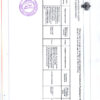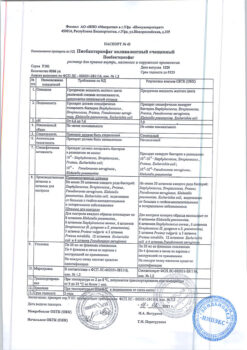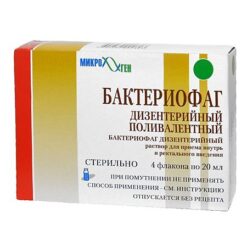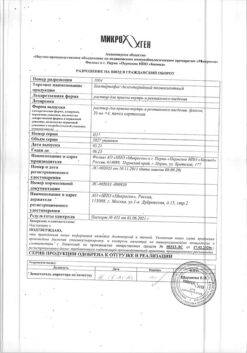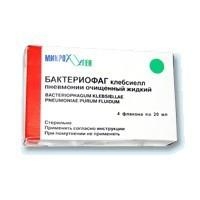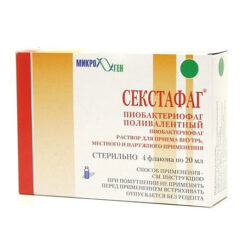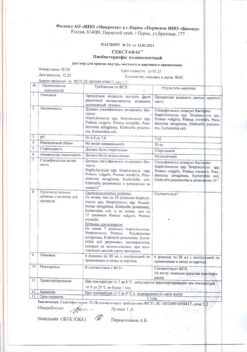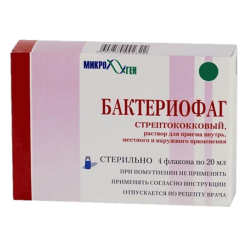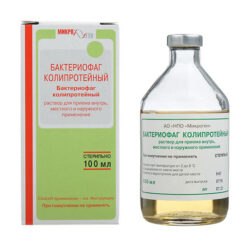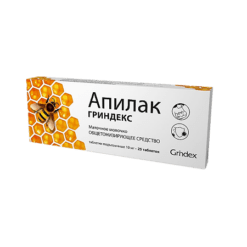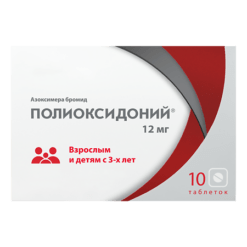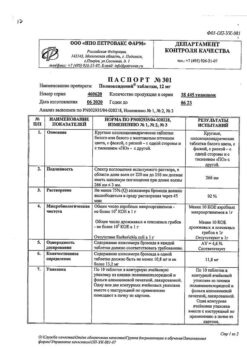No products in the cart.
Enbrel, lyophilizate 25 mg 4 pcs
€1.00
Out of stock
(E-mail when Stock is available)
Description
Pharmgroup:
A drug with anti-inflammatory action. Inhibitor of tumor necrosis factor alpha (TNF-α).
Pharm Action:
The enbrel tumor necrosis factor (TNF-α, TNF-α) is a major cytokine that supports the inflammatory process in rheumatoid arthritis. Increased levels of TNF are also found in the synovial membranes and psoriatic plaques of patients with psoriatic arthritis, as well as in the plasma and synovial tissues of patients with ankylosing spondylitis. Etanercept is a competitive inhibitor of TNF binding to its receptors on the cell surface and, thus, inhibits TNF biological activity.
TNF and lymphotoxin are pro-inflammatory cytokines that bind to two clearly distinguishable tumor necrosis factor receptors (TNF) on the cell surface: 55-kilodaltone (p55) and 75-kilodaltone (p75). Both TNFRs are present in the body in membrane-bound and free forms. Soluble TNFRs regulate the biological activity of TNFRs.
TNFRs and lymphotoxin exist primarily as homotrimers; their biological activity depends on cross-linking of TNFRs on the cell surface. Dimeric soluble receptors, such as etanercept, have a higher affinity for TNF than monomeric receptors and, therefore, are significantly stronger competitive inhibitors of TNF binding to their cellular receptors. In addition, the use of the immunoglobulin Fc region as a binding element in the dimeric receptor structure lengthens the serum half-life.
A large proportion of the pathological changes in the joints in rheumatoid arthritis and ankylosing spondylitis, as well as skin changes in the form of psoriatic plaques, arise from the effects of proinflammatory molecules involved in the TNF-controlled system. The mechanism of action of etanercept seems to lie in the competitive inhibition of TNF binding to TNF receptors on the cell surface. Thus, etanercept prevents the TNF-mediated cellular response by promoting the biological inactivation of TNF. Etanercept can also modulate biological responses controlled by additional downstream signaling molecules (e.g., cytokines, adhesion molecules, or proteinases). And these responses can either stimulate or control TNF.
In patients with psoriatic arthritis, Enbrel improves physical activity and reduces the likelihood of developing peripheral joint damage.
Pharmacokinetics:
Intake
Etanercept is slowly absorbed from the site of p/k injection, reaching Cmax approximately 48 h after a single dose of Enbrel. Absolute bioavailability is 76%. When Enbrel is administered twice a week, equilibrium concentrations are twice as high as after a single dose. After a single oral administration of 25 mg of Enbrel, the average Cmax in plasma is 1.65±0.66 mcg/ml, AUC is 235±96.6 mcg×h/ml. No apparent saturation of clearance was observed in the dose range.
Distribution
The dependence of etanercept concentration on time is described by a biexponential curve. The average Vd value is 7.6 L, while Vd at equilibrium is 10.4 L.
Elimination
Etanercept is slowly excreted from the body. T1/2 is about 80 h. In patients with rheumatoid arthritis clearance is approximately 0.066 l/h, which is slightly lower than its value of 0.11 l/h in healthy volunteers. The pharmacokinetic characteristics of etanercept in patients with rheumatoid arthritis, ankylosing spondylitis and psoriasis are similar.
The 50 mg dose of Enbrel once weekly is bioequivalent to the 25 mg dose administered twice weekly.
Pharmacokinetics in special clinical cases
In patients with acute renal or hepatic impairment no increase in concentrations of etanercept has been observed.
There are no obvious differences in the pharmacokinetics of etanercept in men and women.
The clearance and apparent Vd of etanercept in the group of patients aged 65 to 87 years is similar to that of patients younger than 65 years.
In children with juvenile idiopathic polyarthritis, the serum concentration profile is similar to that of adult patients with rheumatoid arthritis. Modeling suggests that older children (10-17 years) and adult patients will have approximately the same serum levels of etanercept, while younger children will have significantly lower levels.
The mean serum concentrations of etanercept in children aged 4 to 17 years with psoriasis and children with juvenile idiopathic polyarthritis who received Enbrel at a dose of 0.8 mg/kg once weekly (maximum dose 50 mg weekly) and 0.4 mg/kg twice weekly (maximum dose 50 mg weekly) for 12-48 weeks were similar (1.6-2.1 μg/mL). The value was consistent with that of adult psoriasis patients in whom Enbrel was administered at a dose of 25 mg twice weekly.
Indications
Indications
Rheumatoid arthritis
In combination with methotrexate, Enbrel is prescribed to adults for the treatment of moderate to severe active rheumatoid arthritis when the response to disease-modifying anti-inflammatory drugs (DMARDs), including methotrexate, has been inadequate.
Enbrel can be prescribed as monotherapy in cases of ineffectiveness or intolerance to methotrexate.
Enbrel is indicated for the treatment of severe, active and progressive rheumatoid arthritis in adults who have not previously received methotrexate therapy.
Juvenile idiopathic polyarthritis
Treatment of active juvenile idiopathic polyarthritis in children and adolescents aged 4-17 years who have had insufficient effectiveness or intolerance to methotrexate.
Psoriatic arthritis
Treatment of active and progressive psoriatic arthritis in adults when the response to DMARD therapy has been inadequate.
Ankylosing spondylitis
Treatment of adults with severe active ankylosing spondylitis in whom conventional therapy has not resulted in significant improvement.
Psoriasis
Treatment of adults with moderate to severe psoriasis who have contraindications or intolerance to other systemic therapy, including cyclosporine, methotrexate, or PUVA therapy.
Treatment of children 8 years of age and older with severe chronic psoriasis who have experienced intolerance or insufficient response to other systemic or phototherapy.
Pharmacological effect
Pharmacological effect
Pharmaceutical group:
A drug with an anti-inflammatory effect. Tumor necrosis factor alpha (TNF-α) inhibitor.
Pharmaceutical action:
Enbrel – tumor necrosis factor (TNF-α, TNF) is the main cytokine that supports the inflammatory process in rheumatoid arthritis. Increased levels of TNF were also found in the synovial membranes and psoriatic plaques of patients with psoriatic arthritis, as well as in the plasma and synovial tissues of patients with ankylosing spondylitis. Etanercept is a competitive inhibitor of the binding of TNF to its cell surface receptors, and thus inhibits the biological activity of TNF.
TNF and lymphotoxin are proinflammatory cytokines that bind to two distinct tumor necrosis factor (TNF) receptors on the cell surface: 55-kilodalton (p55) and 75-kilodalton (p75). Both FNORs are present in the body in membrane-bound and free forms. Soluble TNFs regulate the biological activity of TNF.
TNF and lymphotoxin exist primarily as homotrimers, their biological activity depending on the cross-linking of TNF found on the cell surface. Dimeric soluble receptors, such as etanercept, have a greater affinity for TNF than monomeric receptors and are therefore significantly more potent competitive inhibitors of TNF binding to their cellular receptors. In addition, the use of the immunoglobulin Fc region as a binding element in the dimeric receptor structure prolongs the serum half-life.
Much of the pathological changes in the joints of rheumatoid arthritis and ankylosing spondylitis, as well as skin changes in the form of psoriatic plaques, occur due to the influence of proinflammatory molecules involved in the TNF-controlled system. The mechanism of action of etanercept appears to be through competitive inhibition of the binding of TNF to TNF receptors on the cell surface. Thus, etanercept prevents the TNF-mediated cellular response by promoting the biological inactivation of TNF. Etanercept may also modulate biological responses controlled by additional downstream signaling molecules (eg, cytokines, adhesion molecules, or proteinases). And these responses can either stimulate or control TNF.
In patients with psoriatic arthritis, Enbrel improves physical activity and reduces the likelihood of developing peripheral joint damage.
Pharmacokinetics:
Suction
Etanercept is slowly absorbed from the subcutaneous injection site, reaching Cmax approximately 48 hours after a single dose of Enbrel. Absolute bioavailability is 76%. When Enbrel is administered twice a week, steady-state concentrations are 2 times higher than after a single dose. After a single subcutaneous injection of 25 mg of Enbrel, the average Cmax in plasma is 1.65 ± 0.66 μg/ml, AUC – 235 ± 96.6 μg × h/ml. No apparent saturation of clearance was observed within the dose limits.
Distribution
The dependence of etanercept concentration on time is described by a biexponential curve. The average value of Vd is 7.6 l, while Vd at equilibrium is 10.4 l.
Removal
Etanercept is excreted slowly from the body. T1/2 is about 80 hours. In patients with rheumatoid arthritis, clearance is approximately 0.066 l/h, which is slightly lower than its value of 0.11 l/h in healthy volunteers. The pharmacokinetic characteristics of etanercept in patients with rheumatoid arthritis, ankylosing spondylitis and psoriasis are similar.
A dose of Enbrel 50 mg once weekly is bioequivalent to a dose of 25 mg administered twice weekly.
Pharmacokinetics in special clinical situations
In patients with acute renal or hepatic failure, no increase in etanercept concentrations is observed.
There are no obvious differences in the pharmacokinetics of etanercept in men and women.
The clearance and apparent Vd of etanercept in patients aged 65 to 87 years are similar to those in patients younger than 65 years.
Children with juvenile idiopathic polyarthritis have a serum concentration profile similar to that of adult patients with rheumatoid arthritis. Modeling suggests that older children (10–17 years) and adult patients will have approximately the same serum etanercept levels, while younger children will have significantly lower levels of etanercept.
Mean serum concentrations of etanercept in children aged 4 to 17 years with psoriasis and children with juvenile idiopathic polyarthritis who received Enbrel, respectively, at a dose of 0.8 mg/kg once a week (maximum dose of 50 mg per week) and 0.4 mg/kg twice a week (maximum dose of 50 mg per week) for 12-48 weeks were similar (1.6-2.1 µg/ml). The value of this indicator coincided with that in adult patients with psoriasis, to whom Enbrel was administered at a dose of 25 mg 2 times a week.
Special instructions
Special instructions
Infections
Patients should be monitored for infections before starting Enbrel, during treatment, and after completing Enbrel therapy, taking into account the average half-life of etanercept of approximately 80 hours (7-300 hours).
Sepsis, tuberculosis and severe infections have been reported with the use of Enbrel, incl. opportunistic, including invasive fungal infections. When examining patients, one must take into account the possibility of them developing opportunistic infections, for example, endemic mycoses.
Patients who develop new infections during treatment with Enbrel should be closely monitored. Enbrel should be discontinued if the patient develops a severe infection. Enbrel should be used with caution in patients with a history of frequent or chronic infections or an underlying medical condition, such as advanced or poorly controlled diabetes, that may precipitate infections.
The safety and effectiveness of Enbrel in patients with chronic infections has not been evaluated.
Tuberculosis
Cases of active tuberculosis included miliary tuberculosis and extrapulmonary tuberculosis.
Before prescribing Enbrel, all patients should be screened for active or latent tuberculosis. The evaluation should include a detailed medical history of tuberculosis or previous contact with tuberculosis patients, and information about previous or current immunosuppressive therapy. All patients should undergo appropriate screening procedures (according to local requirements), namely, tuberculin skin test and chest x-ray. It is necessary to keep in mind the possibility of a false-negative tuberculin test, especially in seriously ill or immunocompromised patients.
If active tuberculosis is diagnosed, Enbrel should not be prescribed. The diagnosis of inactive tuberculosis requires the administration of standard anti-tuberculosis therapy before starting treatment with Enbrel. In this case, the benefit-risk ratio of treatment with Enbrel should be carefully analyzed.
All patients should be informed about the advisability of contacting a doctor if complaints or symptoms characteristic of tuberculosis (for example, persistent cough, weight loss, low-grade fever) appear during or after treatment with Enbrel.
Activation of hepatitis B virus
Cases of hepatitis B virus activation have been reported in carrier patients who received TNF inhibitors, including Enbrel. Before prescribing Enbrel to patients at high risk of hepatitis B, it is necessary to conduct an appropriate diagnostic search. Particular caution should be exercised when prescribing Enbrel to patients who are carriers of the hepatitis B virus. If they develop symptoms of this disease, discuss the possibility of specific therapy.
Exacerbation of hepatitis C
Cases of exacerbation of hepatitis C during treatment with Enbrel have been reported, although a clear cause-and-effect relationship has not been established.
Allergic reactions
Allergic reactions often accompany taking Enbrel. Allergic reactions, incl. severe cases included angioedema and urticaria. If any severe allergic or anaphylactic reactions occur, stop taking Enbrel immediately and initiate appropriate treatment.
Immunosuppression
With anti-TNF therapy, incl. and Enbrel, there is a possibility of suppressing the human body’s defense mechanisms against infections and malignant neoplasms, since TNF is involved in inflammation and modulates the cellular immune response. However, in adult patients with rheumatoid arthritis during treatment with Enbrel, there were no cases of suppression of delayed hypersensitivity, a drop in immunoglobulin levels, or changes in the size of the effector cell population. Children with juvenile idiopathic arthritis have rarely developed chickenpox and symptoms of aseptic meningitis, which resolved without complications. Patients who have been in contact with patients with chickenpox should temporarily stop taking Enbrel and receive preventive treatment with immunoglobulin against the Varicella zoster virus.
Malignant and lymphoproliferative diseases
Post-marketing reports have been received of a variety of malignancies (including breast and lung carcinoma and lymphoma).
Lymphoma was diagnosed more often in patients taking TNF inhibitors than in patients who did not receive them. On the other hand, these cases were rare, and the follow-up period for patients in the placebo group was shorter than for patients receiving treatment with TNF inhibitors. In addition, there is a high risk of lymphoma in patients with rheumatoid arthritis, a long-standing, highly active inflammatory disease that complicates risk assessment. According to current knowledge, a possible risk of developing lymphomas or other malignancies in patients receiving TNF inhibitors cannot be excluded.
Non-melanoma skin cancer (NSMC)
RCNM has been reported in patients treated with TNF inhibitors, including Enbrel. Most often, RCNM is diagnosed in patients with psoriasis. For all patients at risk, periodic skin examinations are recommended.
Formation of autoimmune antibodies
Treatment with Enbrel may be accompanied by the formation of autoimmune antibodies. These antibodies are not neutralizing and usually disappear quickly. There was no correlation between the formation of antibodies and the clinical effectiveness of the drug, as well as the incidence of adverse reactions. Isolated cases of the formation of additional autoantibodies in combination with a lupus-like syndrome or a rash similar to subacute lupus erythematosus or discoid lupus erythematosus (data from clinical examination and biopsy) were observed in patients, including patients with rheumatoid arthritis with positive rheumatoid factor.
Hematological reactions
Rare cases of pancytopenia and very rare cases of aplastic anemia have been reported, incl. fatal in patients receiving Enbrel. Caution should be exercised when prescribing Enbrel to patients with a history of blood dyscrasia. All patients and their relatives/caregivers should be aware that if a patient develops signs and symptoms consistent with an infection or hematologic disorder (eg, prolonged fever, sore throat, bruising, bleeding, pallor) while taking Enbrel, they should seek immediate medical attention. In such patients, evaluation, including a complete blood count, is recommended. If the diagnosis of dyscrasia is confirmed, treatment with Enbrel should be discontinued.
CNS damage
Several cases of CNS disorders caused by demyelination have been reported in adult patients receiving Enbrel. Although Enbrel has not been studied in patients with multiple sclerosis, studies of other TNF inhibitors in this concomitant disease have shown the possibility of exacerbation of this disease.
It is recommended that before prescribing Enbrel, a careful risk/benefit assessment, including neurological status, is recommended in patients with a previous or recent episode of demyelinating disease or in those for whom there is an increased risk of developing demyelinating disease.
Combination therapy
The combination of Enbrel and methotrexate did not produce unexpected results in the safety study. Long-term study of this indicator is ongoing. The safety data for Enbrel given with methotrexate were similar to those from periodic safety reports for Enbrel and methotrexate alone. Long-term safety when taking Enbrel with other disease-modifying anti-inflammatory drugs has not been studied.
Congestive heart failure
Caution should be exercised when prescribing Enbrel to patients with congestive heart failure. Data from a number of studies suggest the possibility of worsening congestive heart failure in patients receiving Enbrel.
Alcoholic hepatitis
Particular caution should be exercised when prescribing Enbrel to patients with moderate to severe alcoholic hepatitis.
Wegener’s granulomatosis
The incidence of malignant tumors of various types of extracutaneous localization was significantly higher in patients receiving Enbrel than in the control group. Therefore, Enbrel is not recommended for the treatment of patients with Wegener’s granulomatosis.
Use in pediatrics
There is not enough experience with the use of Enbrel in children under 4 years of age.
The solvent for Enbrel contains benzyl alcohol, which can cause toxic and anaphylactic reactions in children under 3 years of age. Therefore, Enbrel should not be prescribed to this category under any circumstances.
Impact on the ability to drive vehicles and operate machinery
No studies have been conducted on the effect on the ability to drive a car or operate complex machinery.
Active ingredient
Active ingredient
Etanercept
Composition
Composition
1 bottle contains:
etanercept 25 mg.
Excipients:
mannitol,
sucrose,
trometamol,
trometamol hydrochloride (to pH).
Solvent:
benzyl alcohol,
d/i water (up to 1 ml).
Pregnancy
Pregnancy
Enbrel therapy is not recommended for pregnant women, because there is no experience with the use of this drug in this category of patients.
Women of childbearing potential should not plan to become pregnant while being treated with Enbrel.
It is not known whether etanercept can be excreted in breast milk. Because immunoglobulins, like many other drugs, can be excreted in human milk, you should either stop breastfeeding or stop taking Enbrel while breastfeeding.
Contraindications
Contraindications
Sepsis or conditions with an increased risk of its development; severe active infections, including chronic or localized infections; simultaneous use with interleukin 1 inhibitors (including anakinra); pregnancy and lactation; children under 3 years of age; hypersensitivity to etanercept.
The drug should be prescribed with caution for demyelinating diseases, congestive heart failure, immunodeficiency states, blood dyscrasia, diseases predisposing to the development or activation of infections (diabetes mellitus, hepatitis).
Side Effects
Side Effects
Infections: possible upper respiratory tract infections. In the treatment of rheumatoid arthritis – pyelonephritis, bronchitis, septic arthritis, abdominal abscess, cellulitis, osteomyelitis, wound infection, pneumonia, foot abscess, ulcer on the lower extremities, diarrhea, sinusitis, sepsis; infections were caused by viruses, bacteria, fungi, and protozoa. In the treatment of psoriasis – cellulite, gastroenteritis, pneumonia, osteomyelitis. In some cases, pulmonary and extrapulmonary tuberculosis.
From the central nervous system and peripheral nervous system: headache, dizziness, cerebral ischemia, depression, multiple sclerosis.
From the digestive system: abdominal pain, dyspepsia, vomiting, cholecystitis, pancreatitis, bleeding from the gastrointestinal tract, appendicitis.
From the respiratory system: pharyngitis, cough, sinusitis.
From the musculoskeletal system: bursitis, polymositis.
Dermatological reactions: rash, worsening of psoriasis.
From the cardiovascular system: heart failure, myocardial infarction, myocardial ischemia, arterial hypertension, arterial hypotension, deep vein thrombosis, thrombophlebitis.
From the urinary system: membranous glomerulonephropathy, kidney stones.
Local reactions: pain, swelling, redness.
Other: asthenia, peripheral edema, lymphadenopathy. The risk of malignancy cannot be excluded: cases of lymphoma, colon cancer, breast cancer, lung cancer, prostate cancer, extracutaneous solid cancer, skin cancer (non-melanomatous) have been described.
Sometimes the formation of autoimmune antibodies was observed, which did not have neutralizing properties.
Interaction
Interaction
In adult patients, a significant increase in the incidence of serious infections and neutropenia was observed during combination therapy with Enbrel and anakinra compared with patients treated with Enbrel alone. Concomitant use of Enbrel and anakinra has not shown clinical benefit and is therefore not recommended.
Co-administration of abatacept and Enbrel was associated with an increased incidence of serious adverse events. This drug combination has not demonstrated clinical benefit and is therefore not recommended.
In patients who received Enbrel while receiving sulfasalazine, a significant decrease in the mean white blood cell count was described compared with those patients who received Enbrel alone or sulfasalazine alone.
No undesirable interactions were observed when Enbrel was co-administered with GCS, salicylates (except for sulfasalazine), NSAIDs, and analgesics.
Methotrexate has no effect on the pharmacokinetics of etanercept. The effect of Enbrel on the pharmacokinetics of methotrexate in humans has not been studied.
No clinically significant mutual effects on pharmacokinetics were found with simultaneous use of digoxin and Enbrel.
No clinically significant mutual effects on pharmacokinetics were detected with simultaneous use of warfarin and Enbrel.
Live vaccines should not be administered during treatment with Enbrel. There is no evidence of secondary transmission of infection through live vaccine in patients receiving Enbrel. It is recommended that before starting treatment with Enbrel, patients, if possible, receive all vaccinations in accordance with the current national immunization schedule.
Overdose
Overdose
When treating patients with rheumatoid arthritis, no toxic dose limits were exceeded. The highest dose administered intravenously was 32 mg/m2, followed by subcutaneous administration of 16 mg/m2 2 times a week.
One patient with rheumatoid arthritis erroneously self-administered 62 mg Enbrel subcutaneously twice weekly for 3 weeks without adverse effects. A specific antidote for Enbrel is unknown.
Storage conditions
Storage conditions
At 2–8 °C (do not freeze).
Shelf life
Shelf life
3 years.
Manufacturer
Manufacturer
Pfizer Manufacturing Belgium NV, Belgium
Additional information
| Shelf life | 3 years. |
|---|---|
| Conditions of storage | At 2-8 °C (do not freeze). |
| Manufacturer | Pfizer MFG. Belgium N.V., Belgium |
| Medication form | lyophilizate |
| Brand | Pfizer MFG. Belgium N.V. |
Related products
Buy Enbrel, lyophilizate 25 mg 4 pcs with delivery to USA, UK, Europe and over 120 other countries.




